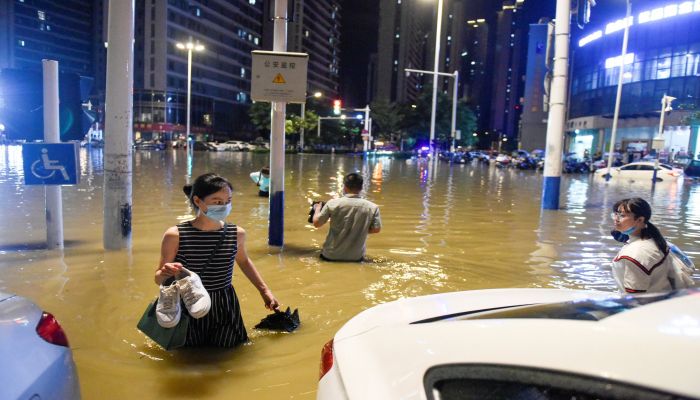
Desk Report
Publish: 13 Jul 2020, 01:17 pm

Unusually strong flooding has washed down buildings and destroyed homes in southern China, affecting around 15 million inhabitants. More downpours are forecast for Saturday.
In Yichang, China's inland city, the muddy water ran high, trapped people in their cars and turned the streets into canals. Near to the Chongqing metropolis, furious torrents of water washed away country highways. The tourist town of Yangshuo witnessed a cloudburst that an official called a once-in-a-two-century event.
Weeks of abnormally intense rains have triggered damage across southern China, leaving at least 106 people dead or missing and impacting 15 million residents in the worst flooding that sections of the country have seen in decades.
One of the hardest-hit provinces was Hubei, whose city, Wuhan, was also the first coronavirus to appear last year. Late last month, rescuers broke car windows to save travelers stranded by floodwaters in Yichang, a town in Hubei down the Yangtze River from the Three Gorges Dam, one of the largest in the world.
Hubei has had more coronavirus cases than any other part of China. And people there said the last thing they needed was another devastating jolt to their lives, their health and their livelihoods.
“Another problem has arisen before the last one subsided,” Deng Jin, 25, a recent college graduate from the city of Enshi, lamented recently on the social platform Weibo. “Hubei in 2020 is both surreal and difficult.”
This time of year, heavy rainfall frequently swell the rivers of China and trigger its reservoirs to flood. Last year, though, the fight against the coronavirus pandemic stressed the plans for the storm, the People's Daily, an official Communist Party publication, reported in April.
The epidemic, combined with the extreme rain, has made dealing with this year’s flooding a “very formidable” task, China’s postal agency wrote in a recent memo urging the authorities to step up their response to the floods, People’s Daily reported this week.
Despite 31 straight days of government forecasts of torrential flooding, the inclement weather showed no indication of letting up. On Friday, the National Meteorological Center is expecting another series of downpours in the southwest of China beginning on Saturday. Scientists alert about possible landslides and landslides in lakes and dams.
In China, most small reservoirs were built in the 1960s and ’70s and did not follow high construction standards, said Brandon Meng, a hydraulic engineer in the southern city of Shenzhen.
“Once there is extreme weather,” he said, “it’s very easy for them to be in danger.”
As the rains were becoming intense last month, some commentators in China noted how little attention they were receiving, both in Chinese news outlets and on social media. Surely, they said, the confluence of a great plague and great floods should merit wider interest.
Perhaps people had grown numb to hardship. Or perhaps China’s government and its censors did not want to draw more attention to people’s suffering.
Either way, videos and firsthand accounts of the flooding have since gained wider notice.
In Yangshuo, a popular travel destination known for its stunning mountain vistas, an official told the newsmagazine Southern Weekly that the area had experienced a once-in-two-centuries burst of heavy rain on June 7. More than 1,000 hotels and guesthouses and 5,000 shops were damaged, the authorities told Southern Weekly.
Qin Hui, a former history lecturer, was on holiday in Yangshuo when the rain began pouring down in buckets last month. He and his travel companions wanted to flee, but felt it was too risky. The next morning, they had breakfast before they saw a troubling image.
“The swimming pool outside the window suddenly went from clear to muddy,” Mr. Qin recounted in an online essay. “It turned out to be floodwater coming in from the tube at the bottom of the pool. Soon after, the murky water flooded out of the pool, quickly covered the yard and then flowed up the stairs.”
They were trapped in their hotel for two nights until a volunteer team rescued them.
Subscribe Shampratik Deshkal Youtube Channel
© 2024 Shampratik Deshkal All Rights Reserved. Design & Developed By Root Soft Bangladesh